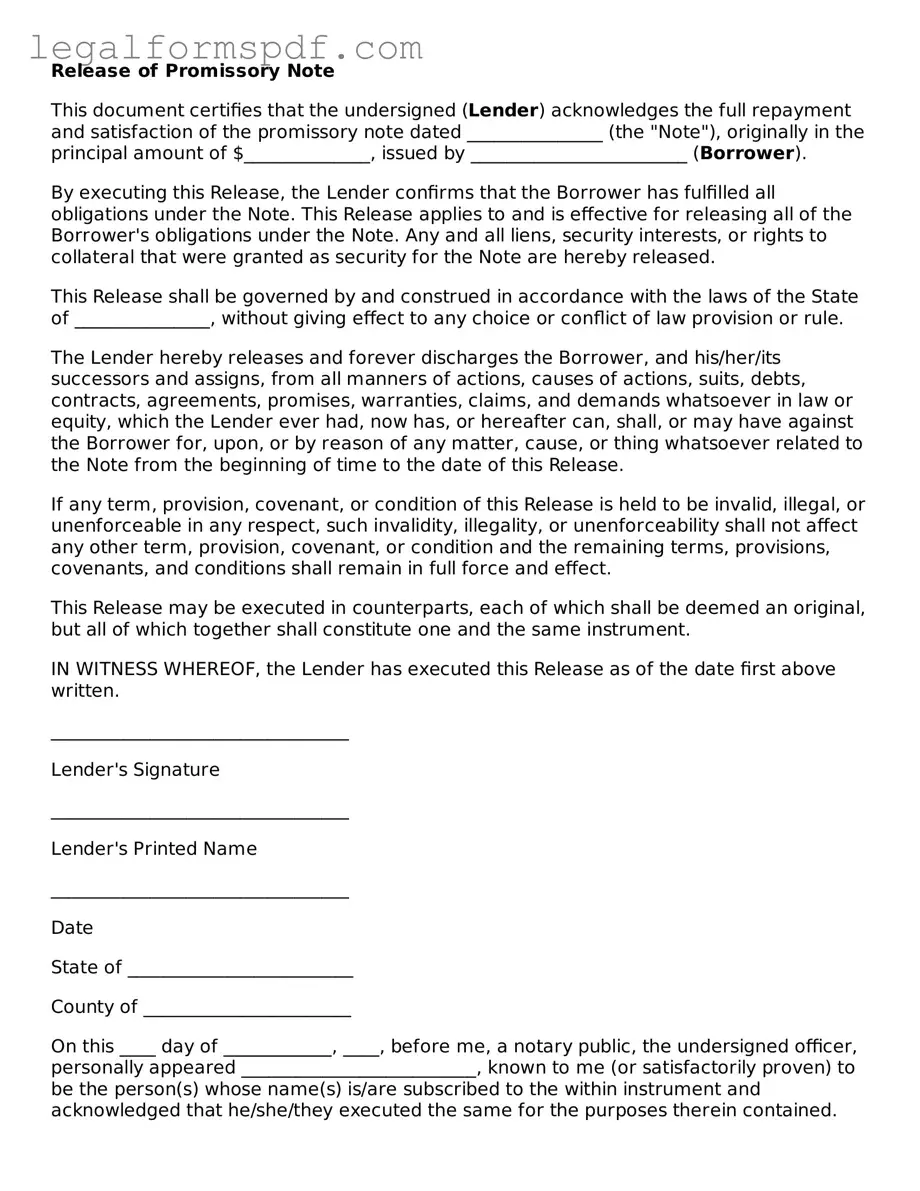Release of Promissory Note
This document certifies that the undersigned (Lender) acknowledges the full repayment and satisfaction of the promissory note dated _______________ (the "Note"), originally in the principal amount of $______________, issued by ________________________ (Borrower).
By executing this Release, the Lender confirms that the Borrower has fulfilled all obligations under the Note. This Release applies to and is effective for releasing all of the Borrower's obligations under the Note. Any and all liens, security interests, or rights to collateral that were granted as security for the Note are hereby released.
This Release shall be governed by and construed in accordance with the laws of the State of _______________, without giving effect to any choice or conflict of law provision or rule.
The Lender hereby releases and forever discharges the Borrower, and his/her/its successors and assigns, from all manners of actions, causes of actions, suits, debts, contracts, agreements, promises, warranties, claims, and demands whatsoever in law or equity, which the Lender ever had, now has, or hereafter can, shall, or may have against the Borrower for, upon, or by reason of any matter, cause, or thing whatsoever related to the Note from the beginning of time to the date of this Release.
If any term, provision, covenant, or condition of this Release is held to be invalid, illegal, or unenforceable in any respect, such invalidity, illegality, or unenforceability shall not affect any other term, provision, covenant, or condition and the remaining terms, provisions, covenants, and conditions shall remain in full force and effect.
This Release may be executed in counterparts, each of which shall be deemed an original, but all of which together shall constitute one and the same instrument.
IN WITNESS WHEREOF, the Lender has executed this Release as of the date first above written.
_________________________________
Lender's Signature
_________________________________
Lender's Printed Name
_________________________________
Date
State of _________________________
County of _______________________
On this ____ day of ____________, ____, before me, a notary public, the undersigned officer, personally appeared __________________________, known to me (or satisfactorily proven) to be the person(s) whose name(s) is/are subscribed to the within instrument and acknowledged that he/she/they executed the same for the purposes therein contained.
In witness whereof, I hereunto set my hand and official seal.
_________________________________
(Notary Signature)
_________________________________
(Printed Name of Notary)
My Commission Expires: ___________
